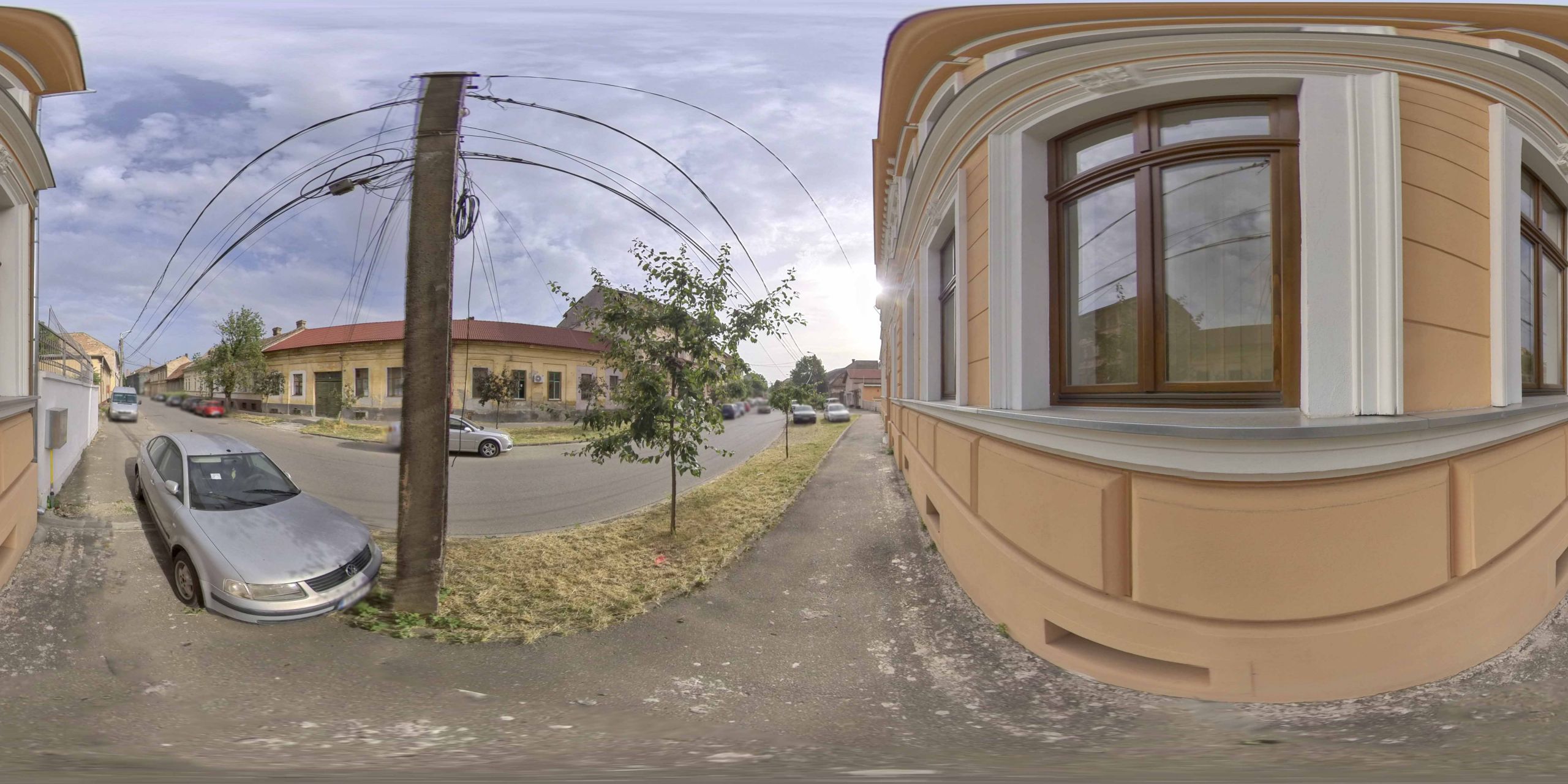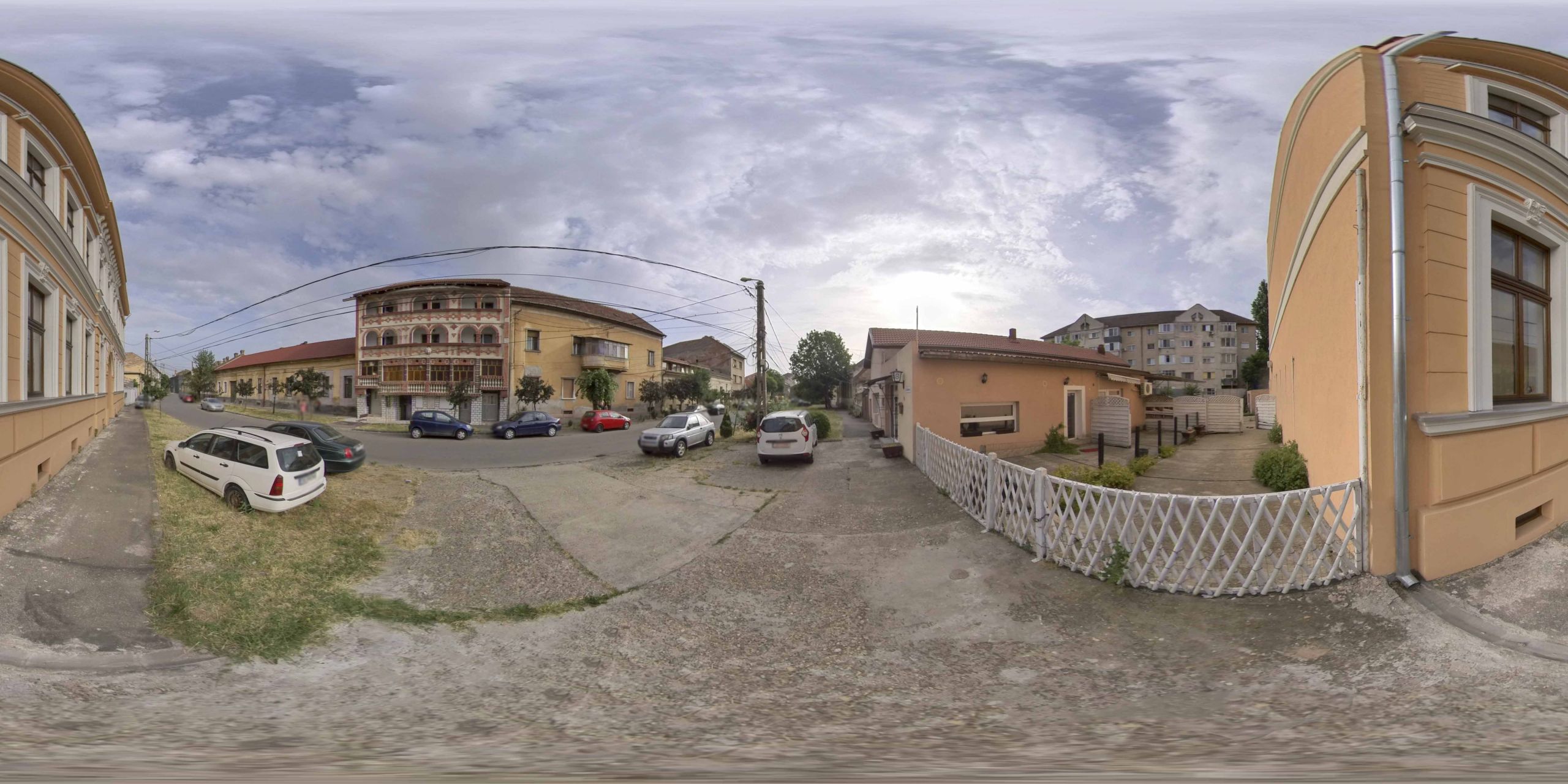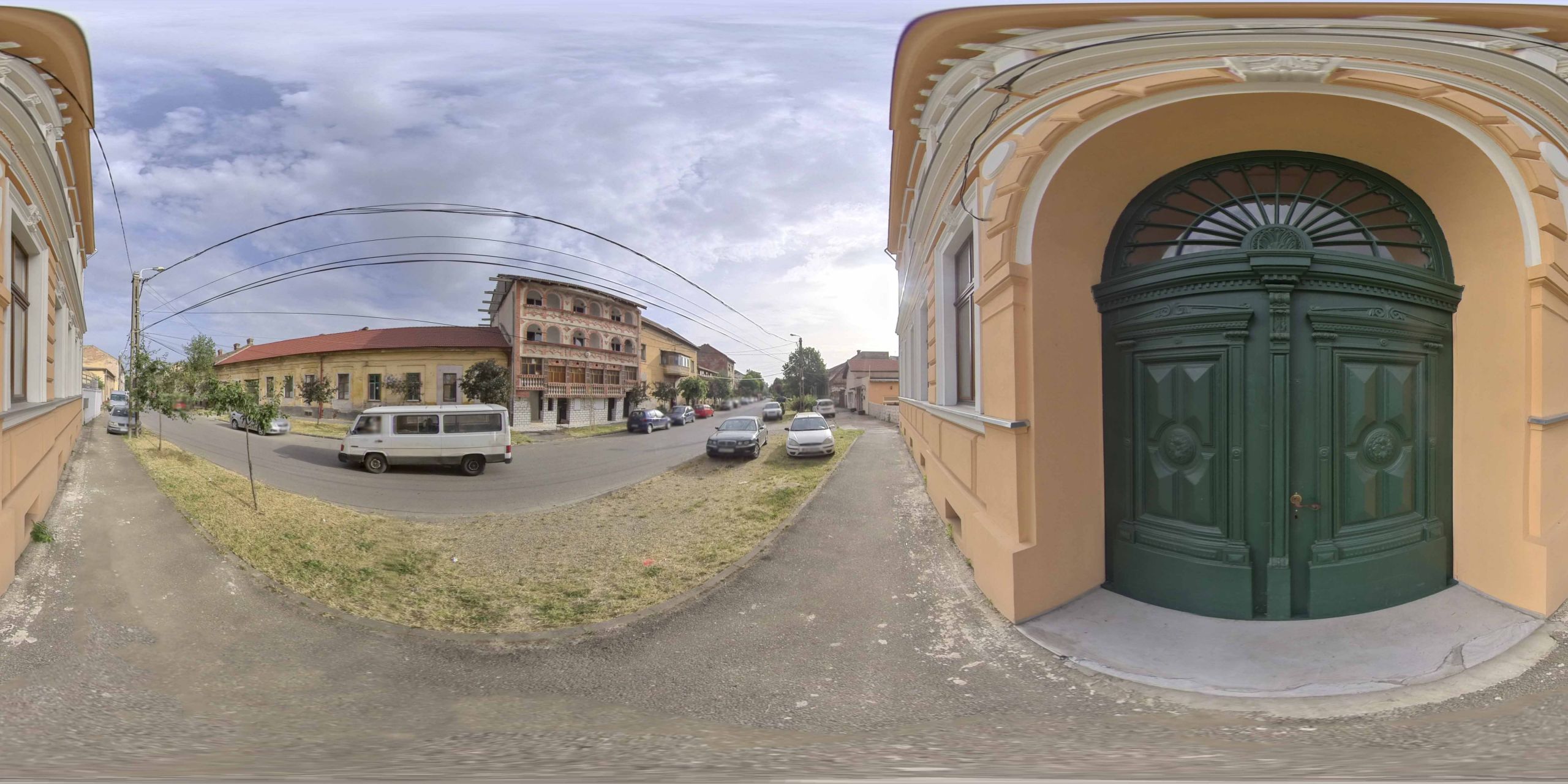Fabric Schools, 14 Pestalozzi Street
Fabric had the following schools: several communal schools, namely the School for boys in Kirchen Street (today Comănești Street), built in 1882, a School for Girls in Lamm Street (today Titu Maiorescu Street), built in 1889, a building in Ungar Street (today Simion Bărnuțiu Street) with 12 classrooms for boys and girls, built in 1912 on the site of the former Hungarian school established in 1869; finally, the building built in the same year in Viile Fabric.
Listen to the audio version.
Fabric had the following schools: several communal schools, namely the School for boys in Kirchen Street (today Comănești Street), built in 1882, a School for Girls in Lamm Street (today Titu Maiorescu Street), built in 1889, a building in Ungar Street (today Simion Bărnuțiu Street) with 12 classrooms for boys and girls, built in 1912 on the site of the former Hungarian school established in 1869; finally, the building built in the same year in Viile Fabric.
The city also had a kindergarten on Graben Street (today Gloriei Street and O. Iosif Street). The municipality had rented the building with no. 16 on Dreikönig Street (today Ion Mihalache Street). In the last two buildings as well as at the Boys' School, all the schools in the neighborhood were concentrated during the First World War, with a half-day educational program.
The teaching nuns owned a monastery on Lamm Street (today Titu Maiorescu Street), and next door, in the Schwerin house, they maintained a kindergarten.
There were also Serbian and Romanian schools in three buildings.
The state preparation for teachers was built in 1895 on Bräuhaus Alley (today Pestalozzi Street) and is one of the most beautiful palaces in Fabric. Next to it was the Gisella orphanage, another adornment of the Fabric neighborhood.
Bibliography:
Josef Geml, Vechea Timișoară în ultima jumătate de secol 1870-1920,Cosmopolitan Art Publishing House, Timisoara, 2016, pp. 84-85.
Schools in Fabric
At the end of the 8th grade, I was happy to get rid of Lipova with all its smal town rural... attractions (.... Among the colleagues from Lipova evoked – nn Smaranda Vultur) the last one (Doru Tulcan) I was going to visit soon after moving to the boarding school of the High School of Fine Arts in Timișoara together with my new colleague from "Medie 5" ( The “ruffian high school” in the Fabric district), Peter Kuliner, both being disciples and admirers of the great artist Podlipny. The friendship with Peter broke down when he left for Israel in the middle of the school year. Out of a class of 40 students, in a year or two a quarter will disappear: Noemi Freund, Sara Țalic, Robert Hild, Maria Reich, Eva Haas, Ludwig Schwartz ... To "Palestine", as it was called then, or to other lands.
VViorel Marineasa, Fiction and history, Timişoara, West University Publishing House, 2020
(...) But let me go back to the real place of my childhood, in fact, the place where I was born, here on Baader Street... I want to say that I still have the image of those mornings when, I don't remember exactly by which train, around 7 or 8 o'clock, when I was going to school, at the Victor Babeș High School, which later became S.M. 5, so, here in this district, Fabric, there used to come herds of female retailers, that's what they used to call the Swabians, the German girls from the neighbouring villages of Timișoara. They would come with all kinds of goodies... They wore their baskets on their heads, like this, with great dexterity, they had a kind of basket of twigs, knotted rags, which they put on their heads, but in a special way, so that they could support the basket, the basket of twigs with eggs, cheese, curd, sausage. They also wore a kind of clothing, long dresses, the rural kind, darker in colour. I repeat, they usually wore rags. For the village woman, the cloth on the head was, then, something common, regardless of the season. And these Swabians brought to the market all sorts of culinary delights: curd, sour cream and all sorts of other dishes, homemade sausages, ham...
A.D:- Where was the market?
The market was, here, close by, it was called Badea Cârțan Square, in fact, before, it was called Hay Market, that's how I knew it, with this name, Hay Market... (......)
So, Baader Street, Six Houses, were, as one would say, the border area between the Fabric district and the long street leading to the Citadel, to the walls of the old printing house and then entering the Unirii Square. When the Russians were here, Take Ionescu, this street had, as I said, some beautiful, good-looking houses, but not new ones, not new blocks of flats, (these appeared much later), where they lived, I repeat, the families of Russian officers. And their children, I remember, were playing war all the time. They had some military uniforms, they attended a certain school, somewhere near the former Pioneer Park. And we, those of us from the Six Houses , but not only, seemed to have a certain envy, not necessarily cultivated by our parents, towards the children of these officers, because we felt somehow privileged and we felt them as being, really, outside our playground, a kind of occupants of these streets and places... Many times, when we passed, in our "incursions" towards the Unirii Square, they were afraid of us, so to speak. We had these slingshots, they were called - strangely enough – ‘’weird’’, I don't know where this word came from, they were made of a kind of beetle, wooden slings, made of thicker tree branches, which were shaped in such a way as to bind the two gums, the two rubber bands, which we used to pick up from the Vulcan factory, near the Little Railway Station, and at the end of which we would mount a piece of leather where we would put the stone and, stretching the gums, we would let the stone go. And with these slingshots we used to frighten these children of Soviet officers, who also had some kind of imitation rifles, revolvers with which they played various games, warlike in their turn, but they were afraid of us and ran away. Sometimes, we even broke the windows of those places. By the time some of the residents were out, we were already far away, hiding. There were gardens all along this street. I remember that on Take Ionescu Street, where the complex is now, opposite the police station, there were gardens belonging to people from the neighbourhood... The tram drivers. There were gardens all the way to the railway...
Eugen Bunaru (born in Timișoara 1945) - excerpts from the interview conducted by Aurora Dumitrescu in 2004, Timișoara, The oral history and anthropology group archive, coordinated by Smaranda Vultur.
(...) I also grew up in Fabric, in Mrs. Kimmel's house, on Zürich Street, number 2, a tenement house, built in the interwar period to rent apartments. The apartments were arranged along long, shared balconies, which linked our childhood games. At the back of the house was the park, which protected in its midst the beautiful mansion where the Kimmels once lived. The park was, to the eyes of the child that I was, huge, with old trees. I remember how in autumn we used to make a kind of "glasses" out of the leaves of the old plane trees. From the huge chestnut trees, with their wide crowns, we picked the fruit, which we then turned into dolls, built with stickpins stuck into the chestnut's fat, brown body... Lady Kimmel, lived downstairs, sharing an apartment with the Erhans. She was quiet, withdrawn. The widow of one of Timisoara's great owners, a liqueur and cognac maker, no one knew who she was. I only remember the square bottle, made of thick glass, with the name KIMMEL beautifully inscribed in embossed letters. I don't remember how it came to us, I only remember how puzzled I was that the name of the silent old woman, hidden in the Erhans' room next to the bathroom, could have been there on the bottle. All my life I have been haunted by the mysterious beauty of the bottles that hide mysterious stories of unknown times... Today I'm recovering: "Ignaz Sándor Kimmel, famous liqueur and cognac maker a century ago. The earliest known representative of the family in Timișoara was a teacher at the "people's school" in Fabric in 1784. Over time, the Kimmels bought several properties in the city, including a villa with land in Fabric, near the Eastern Railway Station, where Zürich Park now stands. The owners planted several trees on the land, that are still standing today, but the park was nationalized after World War II."
We used to go to the park house to play in the afternoons. Not inside, because there was the canteen from the sock factory across the street. We played in front of the house, around the empty pool, where there was a large area where we could run or where we could play, throwing the ball up and shouting the name of the country we chose, so that we could hit the ball on the most vulnerable... Sometimes we kept our balance on the edge of the pool, with our hands outstretched. If anyone was braver, he would follow this line by jumping on one leg... I wasn't one of them anyway.
I entered the canteen only once: my mother had gone to Iasi, to a meeting of school librarians. An event! She left us alone; she "arranged" for us to have a hot meal at the park canteen. Noodle soup and the papricaş with macaroni seemed to me to be my "emancipation" threshold. I was going out "into the world" ... Only the first tea with marmalade bread from Techirghiol will have, in a few years, the same taste of adventure like that food obtained by spreading, like all adults, a voucher at the counter where the cooks distributed the plates and the aluminum cutlery.
I made such a long loop through the neighborhood of my childhood, at the other end of it, to feed the turmoil of today's discovery. The geography of childhood is always a warm therapy ... The part of Fabric that formed the borders of the world in which we grew up stretched from the Little Railway Station, from where my mother sent us to Izvin, giving us someone "in care", to the famous Six- Houses, where most of the children from the school came from, the tram depot, on the right side, or Telegrafului street, where our kindergarten was, or, far away, two streets away, Simion Bărnuţiu street, where we went to high school, the place of my first love - my mother's library and the heaven of my free loneliness ... In front, the tram line 2 and the Stocking Factory, Ocsko Terezia. Later, the names of that huge building were put in order: the architect Szekely Laszlo came to the fore, before the name of the communist fighter who took over the fame of her older compatriots.
Sorina Jecza - 18 June 2015
I was a student at Pipos School. We had very good teachers who could have been teachers for higher classes but were assigned to primary schools because of the lack of places. Mr Béla was an exceptional teacher, a great man. He always carried a red carnation in his jacket pocket, both at school and in the street. During the First World War he was a cavalry lieutenant. (...)
"What were his complaints? What were you doing wrong?"
I was wearing a big green apron and walking around barefoot and in shorts. We were allowed to wear long trousers when we graduated from the discipleship, because wearing long trousers meant you were a carpenter's helper. I was doing all sort of things: pushed the cart, carried the potty after the lady's children in the house, fetched water at the well, cleaned, washed dishes and so on. You had to work hard to be able to learn a trade on top of that... That's why after that I was proud of my job because I suffered and struggled to get it. And I never let myself be trampled on or disrespected. Wherever I worked in my life, if the boss was a nervous man and was raising his voice, I was taking off my apron and getting out of there. I didn't let myself be blamed, because I knew I was doing a good job and deserved to be respected for it. Whether I worked in Timisoara or Budapest or Cluj, Oradea, Szeged or Pécs, I didn't do my job shamefully. I was going into the town, was asking where there was a carpentry workshop, went there and worked.
Lajos Horwáth (Lali), born in 1921, in Becicherecu Mic - extract from the interview conducted by Antonia Komlosi in Timișoara in 2001, published in Smaranda Vultur, Vlad Colar, Thomas Remus Mochnacs, Gabriela Panu, Memory and cultural diversity in Timișoara: crafts and craftsmen, Brumar Publishing House, Timisoara, 2013
Until what year did you live on Samuel Micu Street? Until '37, when I was seven years old. I had already started school there and stopped, and finished first grade on the street... Musorgski I think it's called - in Fabric, near the Fabric fire station. A street parallel to Marshal Joffre - and there was a big school there, School No. 2, and that's where I finished my four classes.
Because my parents wanted me to learn foreign languages, when I was four years old I went to the German kindergarten, where the maid took me through the back, along some streets, to get to Bega, on the bridge on Dorobanți Street, which led to the Water Turbine in Fabric. And on the left bank of the Beghe there was a beautiful villa with a park and a garden. There was a private kindergarten there. Many children from Timișoara went to kindergarten there, and now we meet and know each other from kindergarten. (Were there high fees?) There were some fees, of course. But they took special care of us. In German, of course, only German was spoken. The lady was a sweet, pretty old lady, with white, white hair, tied up in a bun, and in long, black cloth dresses, very pretty. She looked very elegant to me, and I think she was. And because she was old, I think she had some wrinkles on her neck, and she always had some very nice little headbands that covered her wrinkles, little headbands sewn with pebbles, narrow like this, like her finger. I thought she was particularly elegant, and I always admired her. She had blue eyes and I think she had been a blonde all her life, her hair was a perfect white. She was kind, gentle, and soft-spoken. I loved going there!
So that was kindergarten. And she had her helpers, her daughter. She took care of us and taught us everything: and how to get in, and how to take our shoes off, and where to put our things. We used to bring our little bag from home - like this, we had a tin bag - for our lunch. And how to take off our napkin and how to eat. Everybody went to wash their hands, and before and after... You had rules of hygiene and behaviour in your blood: what you can do, what you can't do, not to shout, not to scream, as all children scream now, they seem to be deaf. My daughter went to the home, and when I approached the home I said I was entering a madhouse, that's how they all screamed. They don't care about the educators, they have no idea what's going on with the kids, honestly. I'm not talking about school!
And in kindergarten I started learning German. I had learned it from girls on the street, but I started learning literary language in kindergarten. And my parents spoke perfect literary language and I still spoke it at home. And they insisted on learning foreign languages.
Xenia Manojlovic, born in 1930 in Timișoara - excerpt from an interview conducted by Simona Adam in Timișoara in 2002, The oral history and anthropology group archive, coordinated by Smaranda Vultur.






